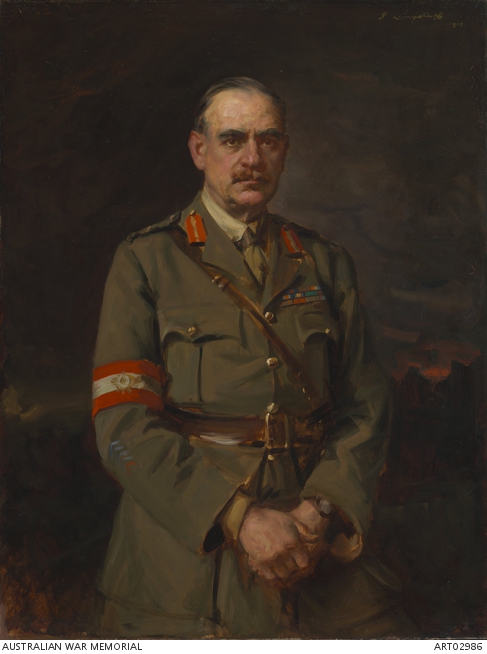Sir John Monash's German Shoulder Strap Collection
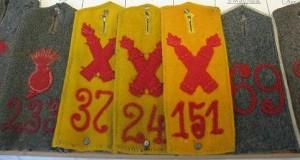
Among the items collected by Sir John Monash during the First World War are over 200 German shoulder straps worn by men who fought against the AIF in 1918. Single shoulder straps were routinely removed from dead or captured Germans for intelligence purposes so the identity of German units opposing the Allied forces could be established.
Monash's collection consists of 26 loose shoulder straps and six wooden boards, each with up to 32 shoulder straps or officer's shoulder boards attached. The six boards are of particular interest as above each strap is written information such as unit, date captured and sometimes the rank of the wearer.
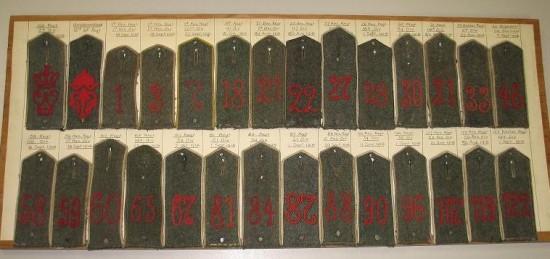
The collection is primarily made up of straps from infantry units but pioneer battalions, flying squadrons, field ambulance, mechanical transport columns, artillery and trench mortar units are also represented.
![RELAWM15049.001 : Shoulder board for 217th Flying Squadron and shoulder straps for Jagdstaffel [ Jasta] 69 [69th Pursuit Squadron] and 7th Flying Squadron](/sites/default/files/styles/main_content/public/86561/image/img03622-272x3001.jpg?itok=cERwzJQT)
Monash refers to this collection in a letter written on 21 August 1918. He recorded that during the recent advances, the Australians had captured almost 10,000 Germans from 75 different units.
![RELAWM15049.004 : Shoulder boards and strap for Minen-Werfer [Trench Mortar] units.](/sites/default/files/styles/main_content/public/86566/image/img03462-300x2331.jpg?itok=brQOKf-G)
His Intelligence Staff collected a large number of shoulder straps, which he arranged to be labelled. He was going to send them home and suggested they could be exhibited to raise money for war charities. Initially he wanted 75 straps mounted and labelled - one for each unit captured. However, the project seems to have expanded and eventually six boards were made, holding 183 shoulder straps or officer's shoulder boards for Germans captured by Australian units between May and October 1918.
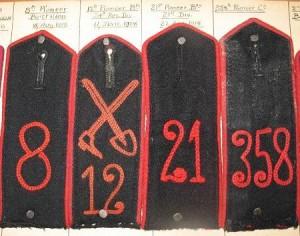
The shoulder boards for lower officers are a mixture of the older silver boards (either worn by men who had served from the early stages of the war, or shoulder boards that were second or third hand) and the later grey fabric boards. The Germans stopped using silver on their shoulder boards in 1915 because they were too shiny but also as a result of the metal shortages they faced due to the British and French blockade of German ports. Instead they were either covered with cloth, painted grey or replaced by the dull grey shoulder boards. These shortages are also reflected in the badges on the shoulder boards, some have earlier gilded brass badges, but most have grey badges made from 'Kriegsmetall' - substitute alloys.
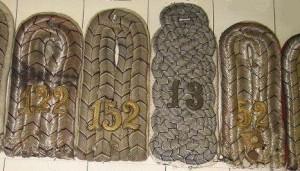
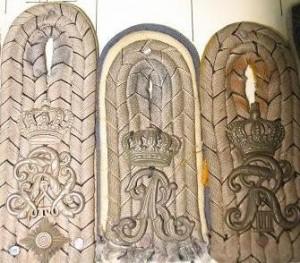
The Saxon Labour Corps shoulder strap below also illustrates the shortages in Germany. It is a thin black strap made from cotton tape 4.2 cm wide (some of the width is hidden in the photo below by the strap next to it, but it is still thinner than most other shoulder straps). It is very basic - the button hole has no reinforcing stitching, the point at the end is created through a mitred corner and the strap does not have any sort of lining. Usually the straps were made by sewing two pieces of wool cloth together (often with coloured piping between the edges).
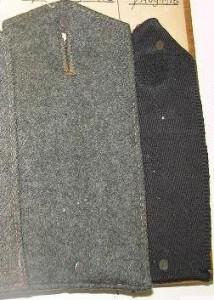
Monash's German shoulder strap collection makes up about half of the Memorial's collection of German shoulder straps and most importantly, the bulk of the collection records the dates when they straps were captured. It really is a very interesting collection.
Books of interest:
- Imperial German Field Uniforms and Equipment 1907-1918 Volume II by Johan Somers
- German Army Handbook April 1918
- Uniforms & Equipment of the Imperial German Army 1900-1918: A Study in Period Photographsby Charles Woolley
- Brassey's History of Uniforms: World War One German Army by Stephen Bull
